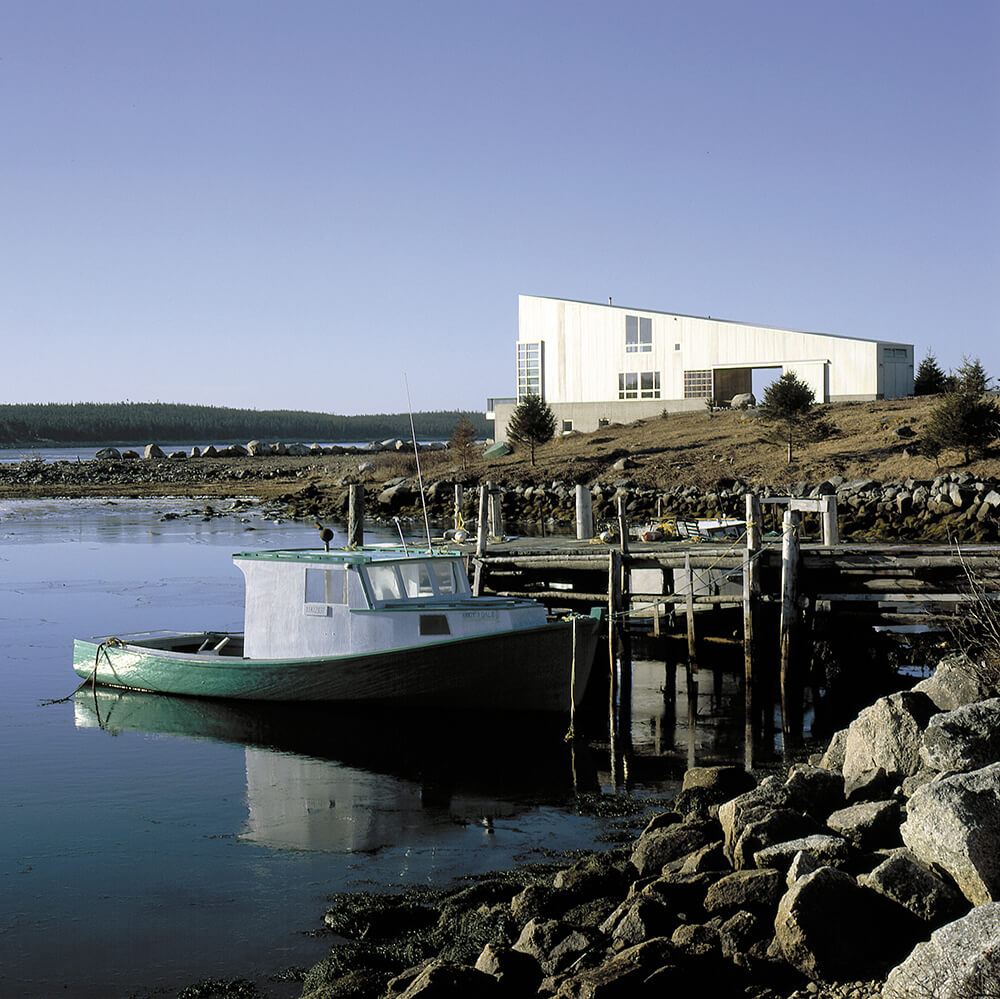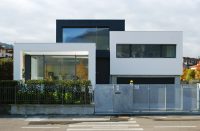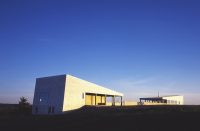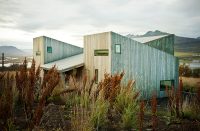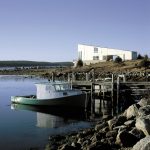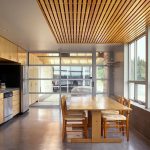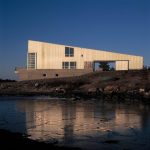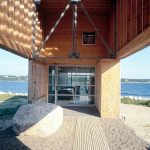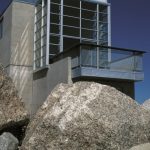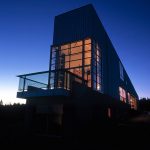Architect(s): MacKay-Lyons Sweetapple Architects
Address: 42 Fawsons Cove Rd, West Pennant, NS, HALIFAX, Canada
Latitude/Longitude: 44.46917284286154,-63.64100358024187
Photographs: James Steeves
The Howard House was conceived as a landscape installation for an art historian and his family of four. It is a 12’x110’ wall that distinguishes the cultural landscape of the fishing cove to the east, from the natural landscape of the wild ocean to the west. An absolute, horizontal datum running through the center of the longitudinal elevation renders the roof and ground plane mirror images. The east façade appears to be paper-thin and vulnerable, while the west façade puts its muscular shoulder to the wind with a concrete bump. The narrow, prowlike south end of the house fronts the bay.
Glazing on the south façade and concrete floors with radiant heating form elements of a passive solar approach. The narrow plan enables natural ventilation. Sliding barn doors close to create a microclimate that extends the seasonal use of the courtyard.
Designed several years before it was built, the Howard House was an important milestone in the development of a modern language for the practice. This language resulted from a career-long study of, and abstraction from, vernacular precedent. It is not a sentimental vernacular but rather the unselfconscious vernacular of pragmatism. An interest in issues of both environmental sustainability and cultural sustainability lead me to the study of plain and ordinary buildings. The vernacular is what you do when you can’t afford to get it wrong. Built on an extremely tight budget, the Howard House was initially taxed as a boat building shed and valued at $12,000 CAD.
The spatial parti of the house is a tube on the main level, with sleeping spaces below for the children and loft bedroom/study above for the adults. This ‘slippery’ tube sets up the problem of making places for repose through the use of totemic elements that provide focus (boulder, dining lantern, hearth-bookcase, south bay window, and south terrace). The use of a secret staircase, hidden behind the hearth-bookcase, pays tribute to a long-time mentor and friend, American humanist architect Charles Moore.
Text description provided by the architects.
Contributed by MacKay-Lyons Sweetapple Architects

